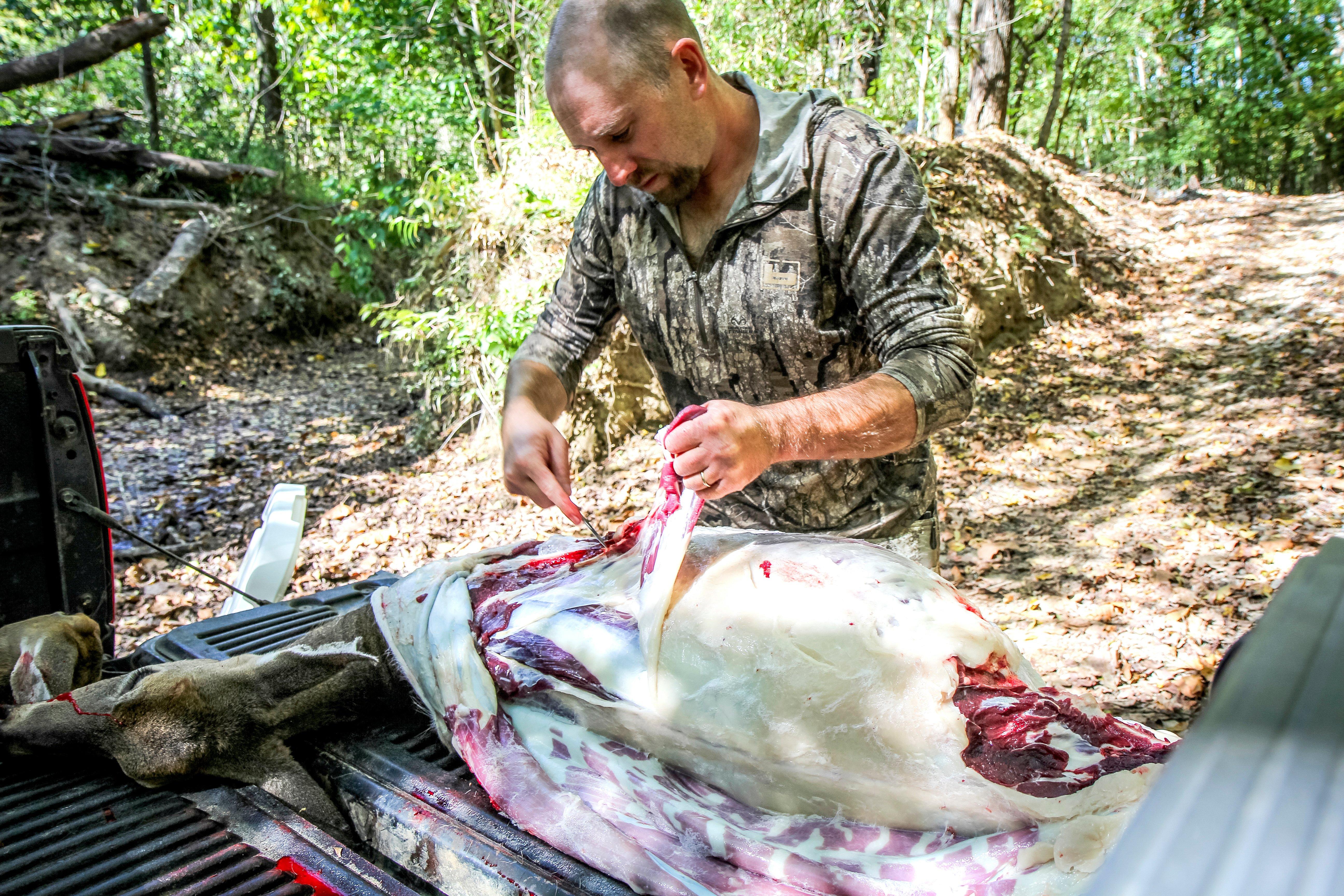Don’t disregard the possibility of shooting an infected deer, and be ready to discard it properly

Make sure to follow all state and local laws when disposing of a CWD-infected deer carcass. Image by Will Brantley
In my travels, I talk to a lot of hunters about the negative effects chronic wasting disease can have on deer populations and the future of deer hunting. Most hunters understand that CWD is a real threat, but many figure it will not affect them personally, even if they hunt near a CWD zone.
“I’ve never shot a deer with CWD that I know of, and doubt I ever will,” is something I hear a lot.
Well, think again, because it can happen, and it will happen to some of you.
A few years ago, I shot a heavy, healthy looking 10-point whitetail in Wyoming, where CWD has been present and documented in whitetails and mule deer for 40 years. The locals I hunted with recommended I have the buck tested, so I removed the lymph nodes and sent them to a state laboratory.
The letter I got back a few days later from Wyoming Fish and Game read, “ … your harvested animal tested positive for CWD. … (experts) recommend CWD-positive animals not be consumed by humans.”
That was the only deer I have ever had tested.
I felt terrible pulling that deer out of cold storage and discarding it, but I followed the rules and science. You should, too. If you hunt in or near a CWD zone, have your deer tested. If it’s negative, great, enjoy the venison. But if it’s confirmed positive, here’s what to do.
3 Ways to Discard a Carcass
The Oklahoma Department of Wildlife Conservation points out that the carcass of a deer infected with CWD can expose other deer to the disease, directly or indirectly. Long after an infected carcass decomposes, the soil might remain infectious for years, possibly exposing new generations of deer to the prions that cause the always fatal CWD. To avoid that exposure risk, the ODC recommends three disposal methods.
Burial at the kill site: Whenever possible, a carcass should be buried on the property where the deer was killed. Bury it deep enough to prevent exposure by predators and scavengers.
In a landfill: Infectious CWD prions are highly unlikely to migrate out of an approved and lined sanitary landfill. Deer remains can be disposed of in household garbage that is hauled to a landfill via regular trash collection. This is the preferred method of many state wildlife agencies.
Leave the carcass at the kill site: If burial or transport to a landfill is not possible, drive back to the property where you shot the deer, and leave it there to decompose. According to the ODWC, if CWD is already present at the property, it’s unlikely to be spread by scavengers to another property where the disease has not been found.
Very important note: Never discard a carcass or any deer quarters until you have confirmed proof (an official letter or email from a lab) that the deer was tested and was found to be positive for CWD. That way, you can’t get in hot water with a game warden about a potential wanton waste violation.
Don’t Miss: HUNTER SHOOTS MONSTER BUCK AFTER HIS TRUCK BURNS DOWN










